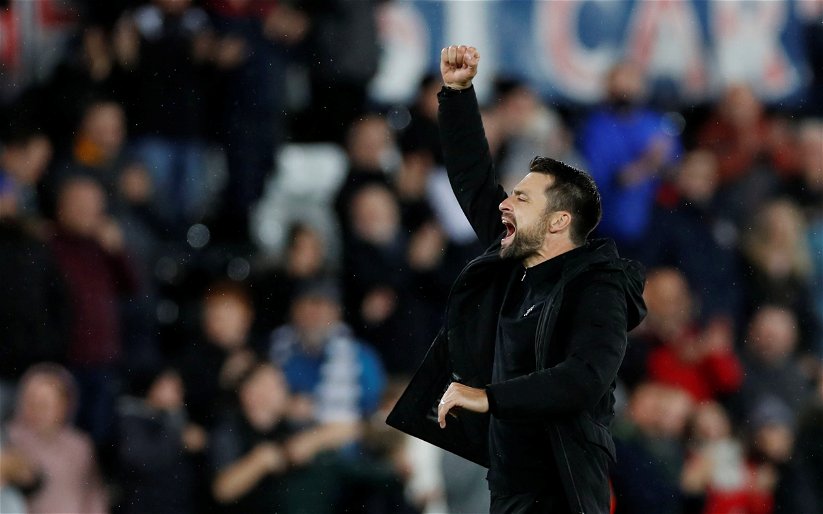Mike van der Hoorn’s shoulder injury at West Brom prompted head coach Carlos Carvalhal into a formation change this weekend, switching from a back three (or five) to a back four for the visit of Everton at the Liberty Stadium.
It was difficult at first to work out exactly what formation it was, which helped to confuse the opposition, as it was something of a switch between a 4-4-2 and 4-3-3.
Check out our average positions map analysis here
The average positions map showed a balanced 4-1-4-1 shape for Everton, but ours was somewhat imbalanced – mainly down the left side as Olsson didn’t have an out and out wide player in front of him like Naughton did with Narsingh, and in the second half – Dyer.
Having adopted defensive-first setups in recent away games, it was a relief to see a much more attacking game plan at the Liberty Stadium. The two Ayew brothers were paired up top, Narsingh offered width, pace and a counter-attacking outlet down the right, whilst Tom Carroll had a different role, offering support to the front two, as well as dropping back to join Ki and King when the team were out of possession.
As opposed to a standard, flat 4-4-2 system, one that Carvalhal used in his first game in charge away at Watford, the 4-2-2-2 or 4-4-2 “double six” is far more dynamic and can easily switch into different systems, in particular a 4-2-4 in attack – with Carroll and Narsingh getting forward (meaning that we were able to get 4 players attacking in the final third), or a defensive 4-3-3 and 4-5-1.
With Olsson playing almost as a winger, forcing Mawson wider at times to cover him, it almost looks like a 3-4-3 below. So it was a system that was definitely very adjustable and versatile.
Carroll’s position was mainly a wide-left attacker, offering support to the front two – particularly Jordan Ayew as well as being the main player to provide a passing option for Martin Olsson.
King and Ki were always together in the middle as holding midfielders, providing defensive support, which was required because of Carroll and Olsson’s advanced positions.

The below screenshot shows a typical example of an attacking move build-up. It starts with Naughton passing into the feet of Jordan Ayew, who drops deeper (having been alongside Andre) to receive the ball. This makes the system a 4-2-3-1 in this particular instance. Jordan dropping deep behind his brother, as a central attacking midfielder, with Carroll pushing up and wide down the left.
He slips in a pass first-time to Andre, who does well to turn the defender, getting into the box but sliding a shot straight at the goalkeeper.
The two holding, central midfielders – Ki and King, don’t push forward too much as the move progresses. Olsson is level with Narsingh, who’s hugging the right touchline, and as the ball moves up the pitch, Carroll makes a quick inside run to offer a third link-up option to the front two.

It was an interesting switch-up from Carlos Carvalhal. It wasn’t strict positional stuff that we got so used to seeing under Paul Clement. Carroll’s role, in particular, was one that seemed to benefit the player significantly. He’s struggled with the defensive side of the game this season, but he was given an attacking role against Everton.
Carvalhal also put confidence in his team to allow Olsson free reign to get forward whenever possible and he had an excellent second half. Getting four players forward and into the final third was also crucial, and allowed us to create a number of good chances on goal. The 4-2-2-2 meant that the two players behind the two strikers (Carroll and Narsingh) could get forward. A big problem when Clement was here was we could never get numbers inside the box. Most players hung back or spread out wide, leaving Jordan Ayew or Tammy Abraham to battle all on their own through the middle.



